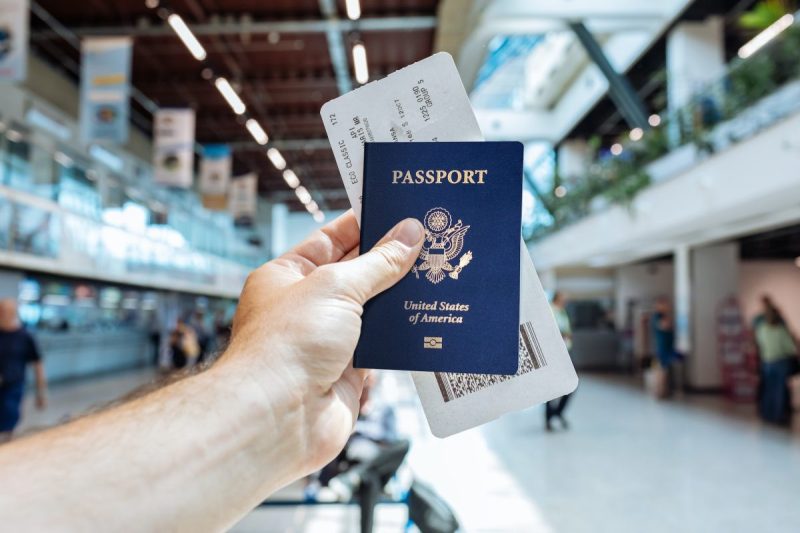Getting a passport might feel like one of those tasks you want to keep pushing to the bottom of your to-do list (it can seem complicated, time consuming, and honestly, a little intimidating). I’ve been there. When I was getting ready to apply for my passport, I was so nervous about making a mistake that I double- and triple-checked every single detail. The last thing I wanted was a delay because of a paperwork error. But here’s the thing, once I actually started the process, I realized it wasn’t nearly as overwhelming as I’d built it up to be in my head. In fact, it’s pretty straightforward when you break it down step by step.
This guide covers everything you need to know about how to get a passport, from the required documents you’ll need to the processing times.
How to get a passport

Step 1: Figure out which passport you need
Before you start filling out forms, you’ll need to decide which type of passport suits your travel plans. For most people, a standard passport book is the right choice (it’s required for international flights). However, if you’re only traveling by land or sea to places like Canada, Mexico, or some Caribbean destinations, a passport card might be enough. Just remember, passport cards can’t be used for air travel.
Step 2: Get your documents ready
To apply for a passport, you’ll need to gather a few documents to verify your identity and citizenship. According to the U.S. Department of State, the basic documents you’ll need are:
- Proof of U.S. citizenship. This can include a birth certificate, naturalization certificate, or a previous passport.
- Proof of identity. A valid driver’s license, government-issued ID, or military ID will work.
- Passport photo. A recent passport-style photo (2 x 2 inches) taken within the last six months. Here’s a quick tip — when taking your passport photo, Kevin Shi from K Vision Studio recommends slowly lifting the corners of your mouth for the perfect neutral photo without looking angry or overly happy.
- Passport application form (DS-11). You can complete this form online or pick one up at a passport acceptance facility.
Make sure to bring original documents or certified copies. The passport office won’t accept photocopies.
Step 3: Fill out the DS-11 form
Next, you’ll need to fill out the DS-11 application form. This form is used for first-time passport applicants. You can fill it out online, print it, and then bring it to your appointment, or you can handwrite it using black ink. Take your time and double-check all of the information so you can avoid any errors. Mistakes can delay the process.
Step 4: Submit your application in person
Once your application is filled out, it’s time to submit it. Unlike renewing a passport, first-time applicants must submit their application in person at a passport acceptance facility. These can be found in post offices, public libraries, or local government offices. Be sure to bring all your required documents, your completed DS-11 form, and the application fee. The fee depends on whether you’re applying for a passport book, passport card, or both.
Step 5: Pay the passport fee and wait
The cost of a passport varies depending on the type and how quickly you need it. After you’ve submitted your application and paid the fee, the final step is to wait. According to the U.S. Department of State website, current standard processing times range from four to six weeks. If you’re on a tight schedule, expedited services (for an additional fee) can reduce processing times to about two to three weeks.
How to renew your passport

If your passport is expired or about to expire, renewing it is usually easier. Most renewals can be done online or by mail. You’ll need:
- Form DS-82
- Your old passport
- A new passport photo
- Renewal fee
How to get a passport FAQs

Can I get a passport in one day?
It’s possible to get a passport within 24 hours by visiting a regional passport agency. You’ll need to provide proof of travel plans, and an appointment may be required.
How long is a passport valid?
For adults, passports are valid for 10 years. For children under the age of 16, passports are valid for only 5 years, so be sure to check your child’s passport well before your trip.
What should I do if my passport is lost or stolen?
If your passport is lost or stolen, report it immediately to the U.S. State Department using Form DS-64. You’ll need to apply for a replacement passport and provide any necessary documentation.
Can children travel internationally without their own passport?
No, every child, even infants, must have their own passport to travel internationally.
Do I need a passport for domestic flights?
No, you don’t need a passport for domestic flights within the U.S. You can use a government-issued ID, like a driver’s license, for airport security. May 7, 2025, you’ll need a REAL ID to travel domestically.
Can I travel if my passport expires soon?
Many countries require that your passport be valid for at least six months beyond your planned travel dates. Always check the passport requirements for the country you’re visiting before booking your flight.




